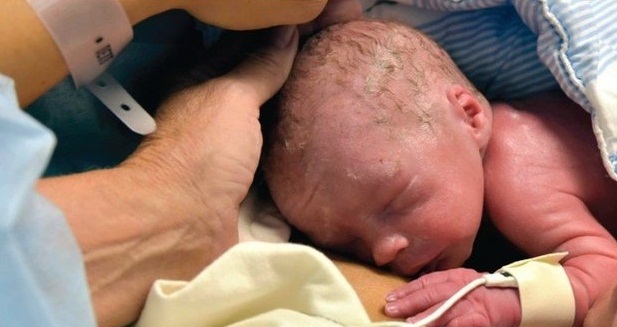“You can call it a miracle, a hope or a major breakthrough in the field of Obstetrics and Gynecology.”
The baby boy was born just like any other weighing about 3.9 pounds but what made more special was that he was born to a mother who was originally born with no uterus.
The 36-year old Swedish woman who became the first ever to give birth from a translated womb received it from a friend who was already in her 60s.She had her ovaries intact and was thus able to produce eggs, which were then fertilized using IVF prior to the transplant.
Absolute uterine factor infertility which is the only type of female infertility still considered to be untreatable is often a consequence of Rokitansky syndrome, which is when a woman is born without a womb. For such women adoption and surrogacy have so far been the only options available to acquire motherhood.
Hence for women with Rokitansky syndrome, the birth of this baby through womb transplant brings a new hope.
The researchers from the University of Gothenburg, Sweden who performed the transplant have been investigating the viability of womb transplantation for more than 10 years. Earlier they had conducted trials in rodents and non-human primates before attempting the procedure in humans.
The trail began in 2013 where the researchers initiated transplants in nine women with absolute uterine factor infertility who had received wombs from live donors. The team was successful in seven women as two of the women in the trial had to have hysterectomies during the initial months because of severe infections and thrombosis.
It was observed that these women began their menstruation cycle during the first 2-3 months after transplant. There were cases where “mild rejection” was detected in some but the researchers were able to overcome this by prescribing a short course of immunosuppression therapy.
In the Swedish women the eggs were fertilized using IVF prior to the womb transplant. A total of 11 embryos were produced and frozen using this method. One year after the womb transplant, one of these embryos was transferred to the transplanted womb.
According to Prof. Mats Brännström, the led researcher, the growth of the fetus was normal through the first 31 weeks of pregnancy. He said that “We found only one episode of mild rejection during the pregnancy that was successfully treated with corticosteroids, and the woman was working full time until the day before delivery.”
She suffered from preeclampsia due to which she was admitted to hospital at 31 weeks and a cesarean section was performed on her 16 hours later with successful delivery of the baby.
An abnormal fetal heart rate had been detected when the woman was admitted to the hospital but in the later days after the baby was born, he scored perfect as per the Apgar rating scale for determining the health of newborns.
The infant was discharged from the neonatal unit after 10 days, and the researchers said that both mom and baby are continuing to do well.
Prof. Brännström further proudly said that:
“Our success is based on more than 10 years of intensive animal research and surgical training by our team and opens up the possibility of treating many young females worldwide that suffer from uterine infertility. What is more, we have demonstrated the feasibility of live-donor uterus transplantation, even from a postmenopausal donor.”
About Ruchira Dhoke
A qualified medical microbiologist with an avidity to read enchant a deep passion for creating a good impacting masterpiece with my words .I am very fond of good old English literature and like listening to music and paint in my free time.




















